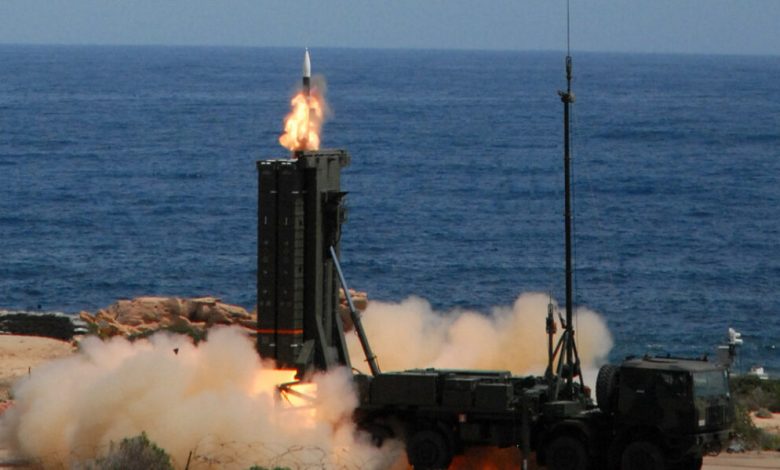Int’l arms trade shrinks 5.1% in 2018-2022

Ukraine becomes 3rd-largest importer of arms in 2022 after start of war with Russia, SIPRI report reveals
The volume of the international arms trade in 2018-2022 contracted by 5.1% from the previous five-year period, according to a report released on Monday.
The five largest weapons exporters were the US, Russia, France, China, and Germany, with a share of 76% of global exports from 2018 to 2022, the Stockholm International Peace Research Institute (SIPRI) said in its report.
Accounting for 40% of the global total in that period, US arms exports surged 14% from 2013-2017.
A total of 41% of US arms exports went to the Middle East, down from 49% from the previous period.
Russia’s arms exports, meanwhile, plunged 31% in 2018-2022 compared to the previous half-decade.
India, with a 31% share, was the biggest recipient of Russian weapons, followed by China with 23% and Egypt with 9.3%.
Russian exports to India fell 37% between the two five-year periods, while they surged 39% to China and 44% to Egypt.
“However, Russia made no deliveries to Egypt in 2021-2022 and the volume of deliveries to China in 2020-2022 was at a much lower level than in 2018-2019,” it said.
The report projected a further decline in Russia’s arms exports due to the ongoing war in Ukraine, now in its second year, as the country will likely to prioritize the production of arms for its own military.
“The multilateral sanctions, including wide-ranging trade restrictions, imposed on Russia, coupled with pressure from the USA and its allies on states not to acquire Russian arms, will also hamper its efforts to export arms,” it added.
French arms exports soared by 44% during this period, with nearly a third of this increase going to India. The country also expanded its share in global weapons exports to 11% from the previous five years’ 7.1%.
Exports from China, meanwhile, diminished by 23% and from German by 35%.
Arms imports
India continued to the world’s top arms importer in 2018-2022, mainly due to tensions with its northern neighbors Pakistan and China.
India’s share in global weapons imports over the past five years slipped to 11%, down from 12% in 2013-2017, hampered by its slow and complex arms procurement process, along with its efforts to diversify suppliers and attempts to replace imports with domestic design and production.
Despite the decline in Russian exports, it maintained is position as India’s largest supplier, though its share in total imports by New Delhi fell from 64% to 45% between the two five-year periods.
After India, Saudi Arabia (9.6%), Qatar (6.4%), Australia (4.7%), and China (4.6%) had the biggest shares in global arms imports.
European nations, meanwhile, ramped up their purchases of foreign weapons by 47% in 2018-2022, with those of NATO members on the continent soaring 65%.
The biggest European arms importer in that period was the UK, which was also the 13th-largest importer in the world, followed by Ukraine and Norway.
The US provided 56% of Europe’s arms imports, while Russia supplied 5.8%, mainly to Belarus. Germany, meanwhile, sold 5.1% of its fellow European countries’ total arms imports.
Ukraine was the third-largest arms importer last year, as the US and many European nations sent large quantities of military aid to the country amid its war with Russia.
Many of the arms supplied in 2022 were second-hand items from existing stocks, including 228 artillery pieces and an estimated 5,000 guided artillery rockets from the US, 280 tanks from Poland, and over 7,000 anti-tank missiles from the UK, said SIPRI.
Outside of Europe, arms imports plunged by 40% in Africa, while they fell by a total of 21% in the Americas, by 8.8% in the Middle East, and 7.5% across Asia, while there was an increase in East Asia amid geopolitical tensions with China and North Korea, the report noted.
In that region, the largest rate of increase, 171%, was registered by Japan, followed by South Korea with 61%. The main supplier to these countries was the US.
Timo Kirez contributed to this report from Geneva.





